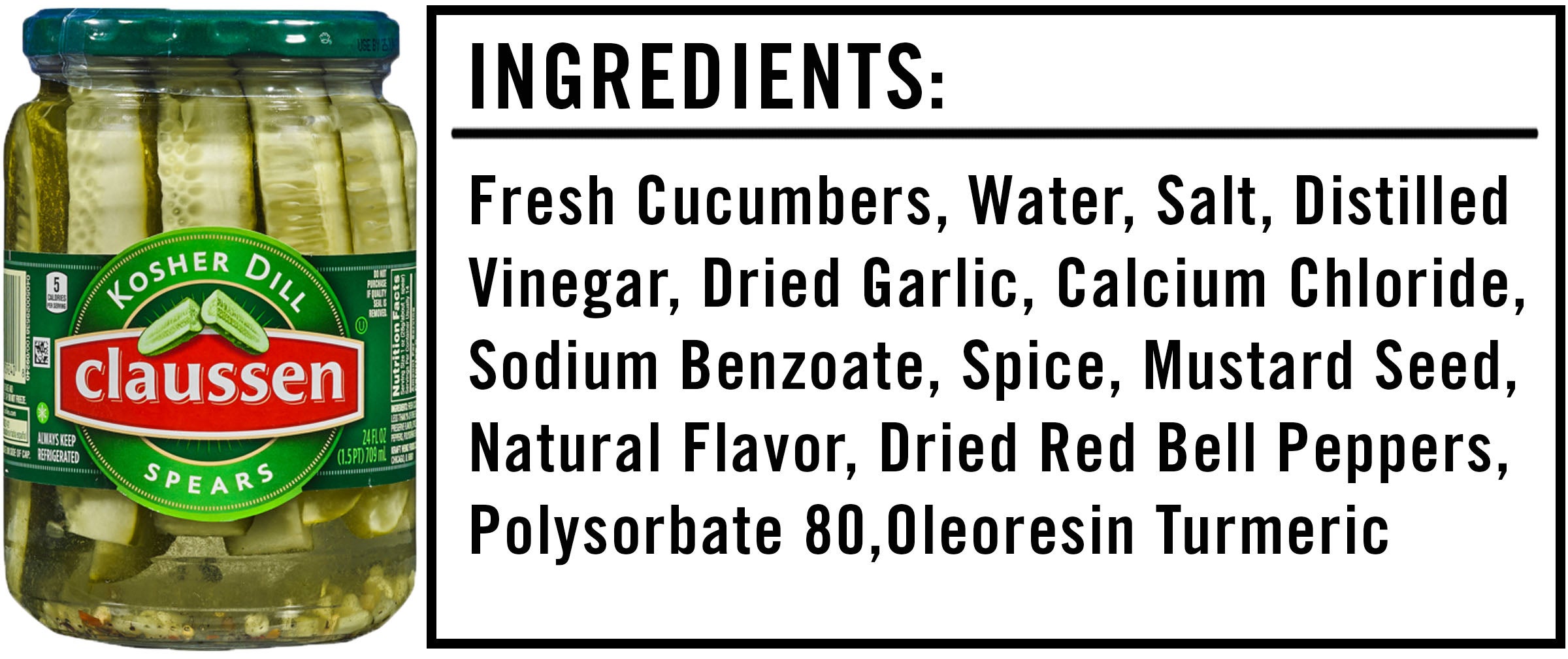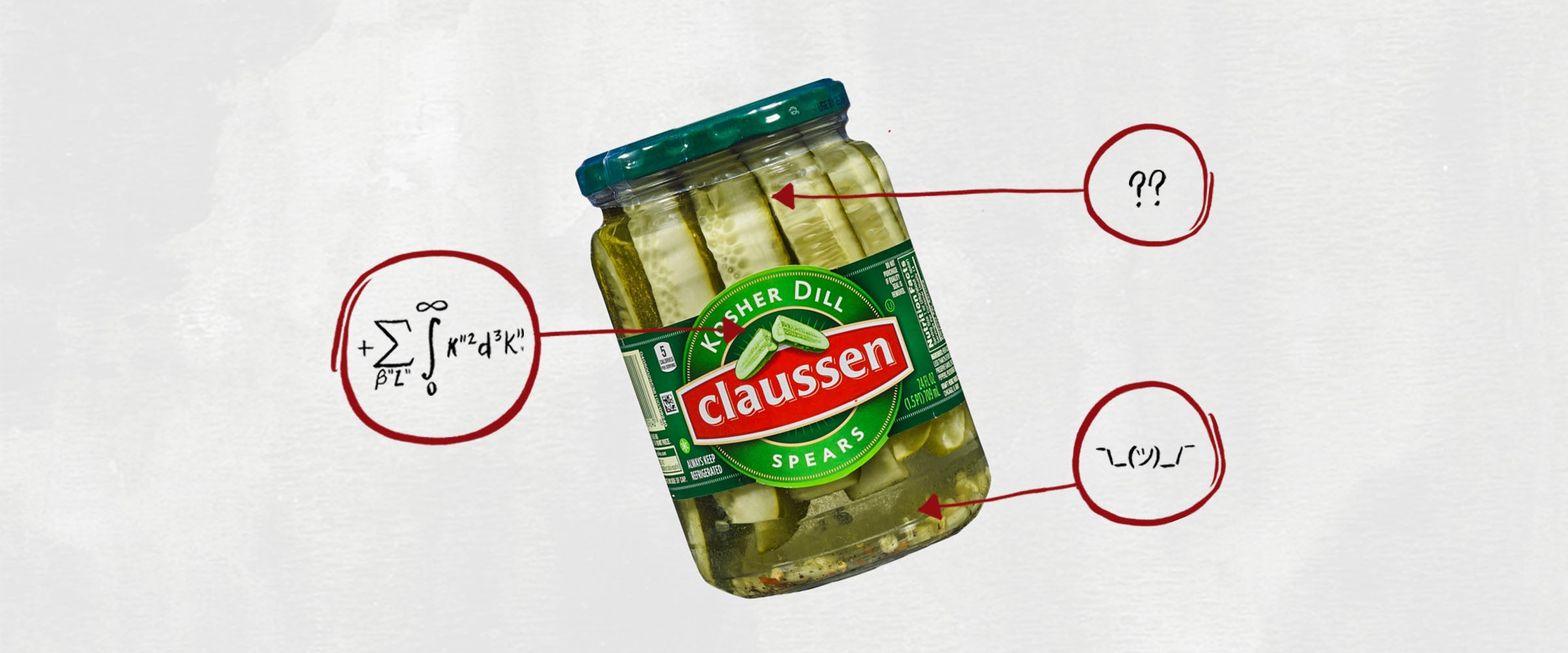We’re often told that you should never eat anything (or put anything on your body) if you don’t recognize everything on the ingredients list. But since most of us have no idea what xanthan gum or potassium benzoate are — or more importantly, what they’re doing to our bodies — we’re decoding the ingredients in the many things Americans put in (and on) themselves with the help of an expert.
This edition: Claussen Kosher Dill Pickle Spears, which are made from 13 separate ingredients that we’ve broken down in the exact order they appear online.

The Ingredients
1) Fresh Cucumbers: Pickles are simply cucumbers that have been soaked in brine. Well, not in this case, obviously, but you know what I mean.
2) Water: You already know this one.
3) Salt: The brine that pickles are soaked in is pretty heavily salted: One spear contains 280 milligrams of sodium, which is an okay amount so long as you don’t slam an entire jar in one sitting — the American Heart Association recommends consuming no more than 2,300 milligrams per day, and in an ideal world, they say that most adults should have no more than 1,500 milligrams. That’s because too much sodium has been linked to high blood pressure, as well as increased risk for heart disease and kidney disease.
4) Distilled Vinegar: Vinegar produced from the fermentation of distilled alcohol. It’s acidic, which helps change the cucumbers into pickles, softening the texture and acting as a preservative.
5) Dried Garlic: This adds flavor.
6) Calcium Chloride: Calcium chloride is a preservative often added to pickles to provide that salty taste without actually adding more salt. It’s really just a means of regulating our sodium intake.
7) Sodium Benzoate (To Preserve Flavor): Another preservative, sodium benzoate has been shown to exacerbate hyperactive behavior in young children. So maybe save these pickle spears for the adults.
8) Spice: As we learned in our exploration of the ingredients in nacho-flavored Doritos, the FDA doesn’t require food labelers to list each spice by their specific name (as a means of protecting their recipes) so long as it follows their definition of the word “spice”:
“The term spice means any aromatic vegetable substance in the whole, broken, or ground form, except for those substances which have been traditionally regarded as foods, such as onions, garlic and celery; whose significant function in food is seasoning rather than nutritional; that is true to name; and from which no portion of any volatile oil or other flavoring principle has been removed.”
9) Mustard Seed: This is a common spice added to pickles, at least in part because mustard seeds have antimicrobial properties that help prevent the growth of nasty food-borne bacteria during the pickling process.
10) Natural Flavor: Natural flavors are quite literally flavors derived from an actual food source — i.e., mustard flavoring taken from real mustard seeds.
11) Dried Red Bell Peppers: These also add flavor.
12) Polysorbate 80: This is an emulsifier, which essentially means it helps the multiple ingredients in these pickles blend together. It’s often added to pickles to help disperse the flavor, ensuring that every spear has some spice. Unfortunately, according to a 2015 study, polysorbate 80 promotes inflammatory bowel disease and a cluster of obesity-related diseases known as metabolic syndrome.
13) Oleoresin Turmeric: This is turmeric extract, added to give the pickles an appealing yellow-ish tint.
The Takeaway
All in all, these pickles aren’t too bad. Sure, they contain potassium benzoate, which could make your kids extremely hyper. And yeah, they have polysorbate 80, which is linked to all sorts of bad stuff (although I’m not entirely convinced that the small amount in a pickle or two is really worth worrying about).
That said, if you’d rather steer clear of the unnecessary preservatives and emulsifiers often found in mass-produced pickles, making your own is incredibly simple. Watch and learn:

